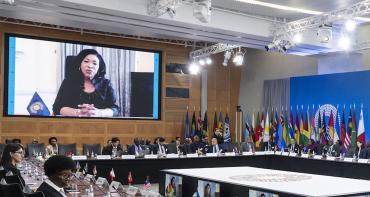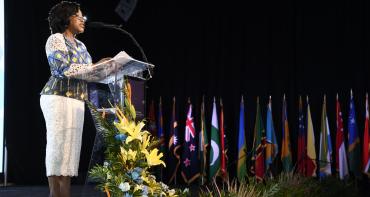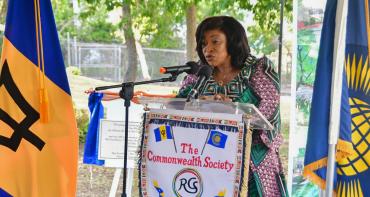My aim is to create an integrated framework so that countries can develop evidence-based strategies to reduce global warming and regenerate their communities, while achieving economic growth at the same time.

Stepping out of the still-whirring helicopter and onto the lush green grass of Iwokrama, Guyana’s tropical rainforest reserve, I knew I was about to begin an amazing journey.
The two-hour ride from Georgetown, the country’s capital, had given me a bird’s eye view of this hidden paradise where the air is so clean it is often referred to as the earth’s lung.
Now, as I stood beneath the never-ending stretch of treetops, I knew I was in the midst of an explosion of exotic life, with at least 1,250 plant species, more than 500 species of birds, and endangered species such as the world’s largest otter.
In many ways it was a milestone trip. Firstly because of the sheer inspirational power of the habitat, but also because of the insights I gained as I sat with Dane Gobbin, CEO of the Iwokrama International Centre for Rainforest Conservation and Development, and Sydney Allicock, a member of the nearby Macushi tribe and Guyana’s fourth Vice President and Minister of Indigenous Peoples’ Affairs.
It was much more than a conversation about conservation. It was about the sacred principles that govern the Macushi tribe’s interaction with their environment. Minister Allicock spoke about understanding our role in the ecosystem and benefitting from nature while preserving its pristine state.
His words resonated with the message of regenerative development which is being promoted by some of the globe’s leading academics, scientists and environmentalists. This recognises that people are part of nature and part of the ecosystem in which we live. It is based on the idea that we can simultaneously improve ecological health, socio-cultural vitality, economic value and human potential in an integrated manner.
I left Iwokrama ready to roll up my sleeves and get to work on exploring the potential of regenerative development. In partnership with the Cloudburst Foundation, the Commonwealth held the first Regenerative Development to Reverse Climate Change (RDRCC) event in London less than five months later and then another in May 2017.
In the first workshop, sixty eminent academics, economic and social scientists, activists and climate action financiers from all parts of the world came together to answer a question: ‘is it possible to reverse climate change using a regenerative approach?’ The answer was a resounding yes.
In May we received strong backing from climate action advocates such as Prince Charles, former president of Kiribati Anote Tong and former president of Ireland Mary Robinson. Mr Tong, who planned for a possible evacuation of people from his island as a result of severe sea level rises, described the regenerative development model as a “light at the end of the tunnel”.
What we have seen recently in the Caribbean, Africa, Asia and the Pacific is unprecedented. This sharp increase in monster storms, floods and landslides and the sheer scale of the devastation they cause, is irrefutable proof that climate change is an ominous threat to our very existence and the starkest reminder that urgent action is a must. This is why I have called for a task force to co-ordinate a rapid response to natural disasters affecting member countries.
Ultimately, my aim is to create an integrated framework so that countries can develop evidence-based strategies to reduce global warming and regenerate their communities, while achieving economic growth at the same time. To accomplish this goal, I need everyone to work together. I hope you will join me on this exciting journey to save our planet.



